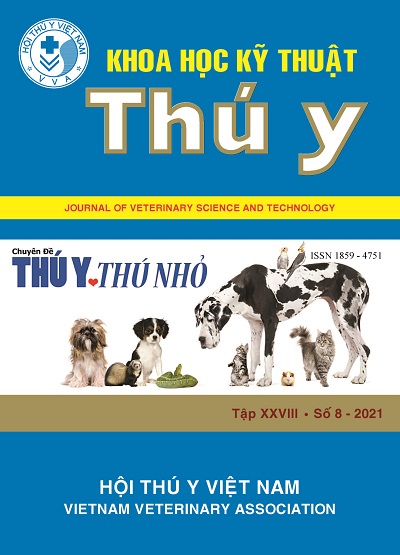Several epidemiological characteristics and pathological changes of dogs infected with canine Parvovirus
Abstract
Canine Parvovirus disease is one of the acute, infectious disease, caused by Parvovirus, with
high infection and mortality rate. In this study, we determined some epidemiological, pathological
and histological characteristics on dogs infected with Parvovirus. The studied results indicated that,
162/350 dogs were positive (46.19%) with Parvovirus by diagnosis, 55 dogs died (39.95%). There
were differences of average infection and mortality rate between the dog breeds in different wards
of Bac Ninh city. The average infection and mortality rate of the unvaccinated dogs showed higher
than that of the vaccinated dogs, and showed different among the dog breeds, the average infection
rate of the indigenous dogs was 41.95%, whereas this rate was 50.57% in the exotic dogs, but
the mortality of the indigenous dogs was 2 times higher than that of the exotic dogs. The infection
and mortality rate of dogs infected with Parvovirus showed highest at the age of 6 -12 weeks old (73.03%) and lowest in the age of > 24 weeks old (19.77%). The different seasons effected to the
infection and mortality rate of dogs, the infection and mortality rate of dogs showed highest in winter
(68.89 and 50.00%, respectively), while these rates were lowest in summer (16.09%). The mainly
pathological changes on the dogs infected with Parvovirus including the intestinal mucosa was eroded,
hemorrhagic intestines, liver, spleen, kidney were swollen, pulmonary edema and hemorrhage. The
histological changes concentrated in the internal organs such as stomach, intestines, liver, spleen,
lung with the main manifestations as hemorrhage, destruction of tissues, necrosis.

